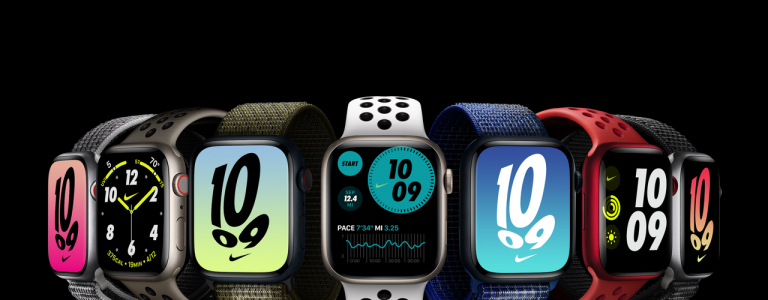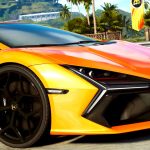
It’s important to note that while we did go hands-on with the Marvel’s Avengers tutorial, it’s just that: a tutorial. It plays like some of the more cinematic sections of an Uncharted – QTEs and all – and aims to introduce you to the basics of each character’s combat style and abilities while breathlessly setting up the story before the experience begins in earnest.
With that said, I’ll offer my brief impressions of how each character feels to control. They all have the same basic set up, which will be familiar to anyone who’s played a superhero game since Batman: Arkham Asylum: each has a light and heavy melee attack that can be combined with their respective idiosyncratic abilities (Iron Man’s laser attack, Thor’s throwable hammer, Widow’s dual pistols and grappling hook etc). They also each have a special, devastating ‘heroic attack’, which has a cool-down.
Thor was my immediate favorite. Perhaps it’s that God of War’s main combat designer, Vince Napoli, is behind Marvel’s Avengers’ hero combat, but throwing his hammer just feels incredibly good; particularly when you boomerang it into the back of an enemy’s head and then collide it against parallel enemies as it’s on its way back to you. Iron Man was a close second, as his ability to aerial attack coupled with a more long-range ground attack made for more variety in combat. Widow felt the weakest, as guns and ninja antics just aren’t as fun as throwable shields and super strength, but that’s somewhat predictable for the least ‘powered’ hero in the team.
Importantly, though, each hero feels like they should; Marvel’s Avengers indulges our power fantasies. Thor’s hammer connects with a powerful thwack, Hulk feels like a rabid beast, and switching between Iron Man in the sky or on the ground never feels unwieldy. These are characters who are already very comfortable with their powers, and they’re all very easy to pick up and play.
Marvel’s Avengers Is Not Open-world, It’s an ‘Expansive World’
Our understanding of Marvel’s Avengers begins properly after the tutorial, which ends with a series of powerful story beats: the destruction of much of San Francisco, the loss of – mild spoiler alert for the beginning of the story – Captain America (look, he’ll be back), and the disbanding of the rest of the group after they are blamed for everything. Five years on and your goal is to reassemble the Avengers, who have all retreated into a state of depressive hiding, in order to face a new threat: AIM (Advanced Idea Mechanics), the sinister science-based organization from Marvel comics who wants to “protect” the world from super-powered individuals.

Here, we are promised that Marvel’s Avengers’ world will open up; minus the QTEs. The term ‘open-world’ is not used, but ‘expansive world’ is. You will have a base of operations on a reclaimed helicarrier, where you can launch level-recommended single-player and co-op missions in hotspots around the world from the Destiny-esque “War Table” overworld map.
Marvel’s Avengers Single-player and Multiplayer Gameplay
Single-player missions in Marvel’s Avengers are called “Hero Missions,” and their purpose is to play out a main campaign as a particular hero in an environment that speaks to their strengths. Iron Man might be given a mission with a lot of wide-open space, for example, or Hulk might be the focus of a mission full of destructables. These Hero Missions are also story-heavy – they make up what is essentially Marvel’s Avengers’ main story campaign, and will, therefore, place a big focus on character development and backstory.
Elsewhere, “War Zone Missions” can be played either solo or with up to four players – not five, which was curiously unexplained – in co-op. The goal behind co-op in War Zone Missions is to have you working as a unified team with all your powers singing in harmony, so although it wasn’t 100% verified by Square Enix, don’t expect to have four Thors running around at once.

While Square didn’t go into too much detail around War Zone Missions, with the caveat that co-op was something it would talk about later, we did get confirmation that dynamic scaling will exist if you and your friends are at a different level, which also translates if you jump into a Hero Mission after leveling up in War Zone to a ridiculous degree, and vice versa.
Like Destiny, if you choose to spend a lot of time in War Zones, it won’t break the story told in Hero Missions. Everything is built to theoretically feel seamless as you jump back and forth in the narrative/mission pacing. And if you’re a completionist, you’ll want to jump back and forth – as you unlock different Avengers in Hero Missions, leveling them up in War Zones means by endgame you’ll have a relatively robust roster.
It’s worth noting that each War Zone and Hero Mission have a difficulty scale, too, so the option is there to play your way throughout, though of course, this will affect the rewards you pick up as you play.
Marvel’s Avengers Character Customization and Loot
Marvel’s Avengers will have a ton of cosmetic costumes. The team at Square is drawing on 80 years’ worth of Marvel history, so the focus on cosmetics is huge, particularly as additional heroes join the roster down the road. Square is quick to impress that, although you will be able to buy more cosmetic costumes from the marketplace, these won’t affect skill, and you can also be rewarded costumes for accomplishing certain missions or story threads.

But the level of customization goes much deeper than Hulk’s Joe Fixit. Gameplay-impacting gear is a big focus in Marvel’s Avengers, which you can earn in each mission, with rarer gear dropped in higher difficulty missions (and will likely be a fundamental drive throughout Marvel’s Avengers’ endgame). Gear is separated into the usual common/uncommon/rare/epic/legendary/secret ‘beyond legendary’ loot-shooter categories and is also character-specific, so you can tailor your character to your playstyle based on the gear you equip.
Of course, gear has perks, which will change the way your hero plays depending on what you equip; the higher the rarity of gear, the better perks. There’s also branded gear, like an entire set of a Stark Industries line, that have special builds for your heroes with stat bonuses and synergies.
Gear is in sympatico with character skill trees as you level up. These offer further customization options depending on how you want to play (we got a glimpse at Iron Man’s, which were separated into Melee, Rupulsor, Laser, and Rockets). You can switch between each of these skills mid-game on the D-pad once they’ve been unlocked, and again, the focus here is to not typecast any character into a specific “class,” rather a build that suits your playstyle. So you can have a Thor that acts as crowd-control with area of effect lightning attacks, or you can have a Thor that acts as a heavy, up-close-and-personal with upgraded melee power and health.
Marvel’s Avengers Story and Plot: The Endgame
Though there will still be much to discover upon Marvel’s Avengers’ debut on May 15, 2020, it’s planned to be ever-evolving, which means we naturally had questions around its endgame. Though loot is an important focus, Square is adamant that stories remain at its heart. Not only will new stories be told as heroes are added, but more stories centered on that original roster of heroes will also be told.

In fact, storytelling is a repeated mantra throughout our presentation of Marvel’s Avengers. Square tells us that although the team is under Marvel’s watchful eye to make sure their vision is consistently authentic, they’ve also been encouraged to push boundaries and uniquely add to the tapestry of its history.Lucy O’Brien is Executive Editor of Features at IGN. Follow her on Twitter.

























